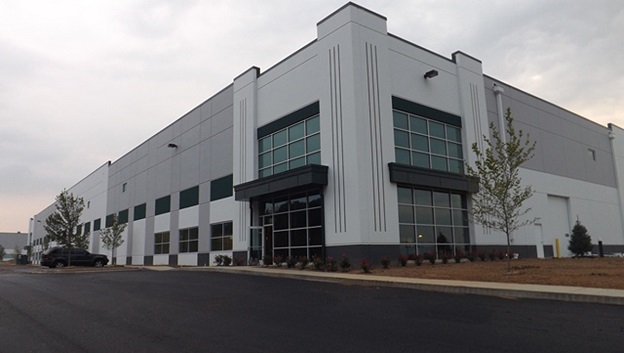 HSA Commercial recently leased up this 220K spec in Plainfield, IN, and has started developing another spec nearby.
HSA Commercial recently leased up this 220K spec in Plainfield, IN, and has started developing another spec nearby.
CHICAGO—For several years most of the forecasts about the US economy have been relatively optimistic, but some clouds have begun to appear, and some people worry that a new recession could occur. But NAIOP’s new semi-annual forecast on industrial demand predicts that these factors, including trouble overseas, declines in domestic equities markets and a steep drop in oil prices, will have only a modest impact on industrial demand.
Although lower energy prices usually translate into greater spending power for consumers, the authors of the report, Dr. Hany Guirguis of Manhattan College and Dr. Joshua Harris of University of Central Florida, say it will take time for this to boost the nation’s industrial market. Therefore, in the short-term the drag felt from overseas uncertainty and other factors should limit the growth in demand for industrial space for at least two years.
“The forecast remains positive but trends lower, to quarterly rates of around 54 million square feet absorbed by the end of 2016, dropping to roughly 48 million square feet by mid-2017,” the economists write. “This is down from the high of more than 60 million square feet absorbed on a quarterly basis last year.”
They also say that the government’s preliminary report of 0.7% annualized growth rate in fourth-quarter GDP shows a reduction in growth rates may be inevitable. However, at the same time, a true recession seems unlikely. After all, unemployment remains relatively low at just 4.9% and consumers continue to display confidence. “Thus, the most likely impacts on industrial real estate markets will be significant slowdowns in the growth rate in markets dominated by energy producers and export-focused manufacturers.” But “industrial markets focused on domestic production and distribution to consumers will continue to experience relatively moderate, healthy growth.”
The overall economic picture brightened just a bit last Friday when the government updated the preliminary report on fourth-quarter growth and found a 1% growth rate. However, Harris tells GlobeSt.com that the NAIOP team used “multiple period forecasts that include upper and lower boundaries, as such the difference of 0.7% to 1% would not change the forecast in any meaningful way.”
Guirguis and Harris also believe that interest rates and inflation will most likely remain low in 2016 and 2017. And even if storm clouds appear over China or Europe, income producing real estate in the US, including industrial assets, will remain popular with global investors seeking yield. “This means that the direct risk of an asset pricing bubble in real estate is unlikely, and any such risk should emanate from declines in the fundamental space markets.”
The pair recommends that developers add new supply cautiously, and base these decisions on local market conditions. “The risks of further global market contagion affecting domestic demand cannot be understated. Still, when compared to issues of the past several years — the European debt crisis, for example — today’s risks seem relatively less worrisome.”
Guirguis and Harris offer one final note: “The estimates of national net absorption of industrial real estate presented herein are based, in part, on forecasts of macroeconomic activity in the US. As such, when predictions of macroeconomic activity become more variable and risky, as they have over the past three months, so do forecasts of real estate demand that utilize such predictions as inputs. The two variables whose forecasts have increased in variability the most are GDP and unemployment. It is these core macroeconomic indicators that are putting the most downward pressure on the forecast. If these indicators resume faster growth rates and greater stability, it is possible that net absorption of industrial space could climb above the currently forecast levels.”

















 Copyright © 2024 ALM Global, LLC. All Rights Reserved.
Copyright © 2024 ALM Global, LLC. All Rights Reserved.